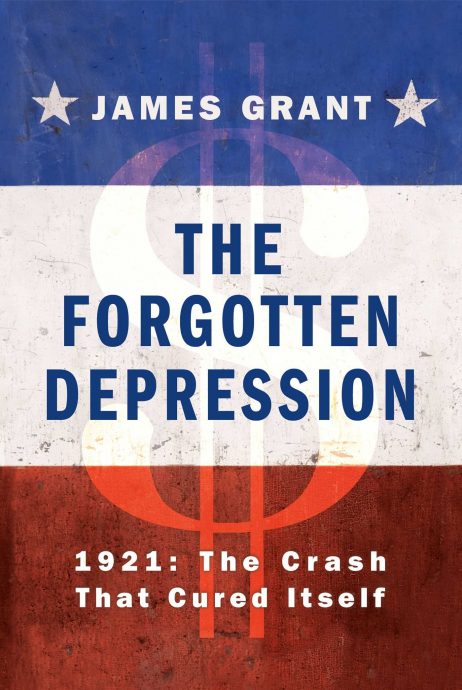The more blunders the Fed makes, the more power and prestige it seems to get.
The Economic Crash that Cured Itself: A Conversation with James Grant
What if a profound economic downturn occurred and the federal government basically ignored it? Couldn’t happen, right? In his latest book, The Forgotten Depression, James Grant details for us the depression of 1921 and how it was permitted to cure itself. We discuss in this podcast how the Wilson* and Harding administrations let prices and wages fall, balanced the budget, and raised interest rates through the Federal Reserve. The result was a painful and, more importantly, quick depression that righted itself by late 1921, setting the stage for the economic growth of the 1920s.
The comparisons are easy and telling. The 1929 crash saw the federal government choose the opposite course by quickly enacting wage floors and ceilings that were designed to keep people employed at current wages and to stabilize prices. Resulting from this policy, and a host of other unhelpful interventions, was an economic disaster that lasted more than a decade. Our own anemic recovery from the 2008 crisis has been medicated with fiscal stimulus, intense regulatory measures such as the Dodd-Frank Act “so this never happens again,” and the Fed’s quantitative easing making it akin to a sovereign wealth fund. The effect is that prices haven’t cleared and thus can’t accurately prepare and guide the market in a new round of economic growth.
Grant details for us that we once took a different path in the wake of economic distress, one that ended the pain faster, and didn’t grow government and diminish freedom. It is a history worth telling.
*Woodrow Wilson shouldn’t come off exactly smelling like roses for his benign policies after the decline. He was basically incapacitated at this point in office and relied on others to make policy here.



